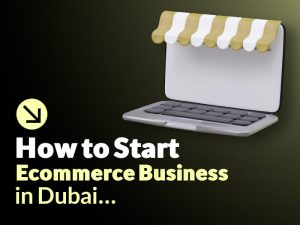What does it take for a global music platform to thrive in a rapidly evolving city like Dubai? Spotify’s journey in the Middle East, especially in a fast-paced, multicultural hub like Dubai, is a masterclass in data-driven growth strategy. While many global companies apply a one-size-fits-all model, Spotify’s UAE success stems from one core strength: turning user behavior into actionable insight.
In this article, we explore how Spotify leverages behavioral analytics, cultural understanding, and smart campaign strategies to grow and retain its audience in Dubai. Whether you’re a tech founder, digital marketer, or local business owner, this breakdown offers practical lessons for growth. We'll also delve into their holistic approach to data, how they manage customer feedback, and the crucial role of influencers and community building in their local strategy.

Personalizing the User Experience: The Algorithmic Heartbeat
Spotify’s signature strength is its ability to make content feel deeply personal, and it’s no accident. Every stream, like, and search feed Spotify’s recommendation algorithm. It uses this data to deliver personalized playlists like Discover Weekly, Daily Mix, or even Arabic Chill Vibes based on what, when, and how users listen. In Dubai, where every user has a different musical background, personalization isn't just a feature—it's a necessity for survival. An Egyptian user may prefer nostalgic Arabic classics. A Filipino nurse may love OPM playlists on night shifts. A British entrepreneur might go for instrumental deep focus mixes at 5 a.m. Spotify doesn’t guess; it listens. And that’s exactly what makes it work. Just like we’ve outlined in our guide to why data-driven marketing is critical, personalization isn’t fluff; it’s fuel for retention and a powerful tool for building a lasting connection with users.Challenges of Personalization in Dubai
Personalizing for a city as diverse as Dubai comes with unique complexity:- Multilingual listening is common, as users often switch between Arabic, English, Hindi, Tagalog, and more, sometimes in the same session.
- Cultural shifts: Listening behavior changes significantly during Ramadan, Eid, or weekends, requiring the algorithm to be context-aware.
- Audience fragmentation: There is no single dominant musical trend. Instead, countless micro-trends exist within distinct communities.
- Rapid population churn: Dubai's transient population means the algorithm must quickly learn new user preferences.
Local Content and Cultural Relevance: Beyond the Algorithm
Spotify doesn’t just personalize music; it localizes the entire user experience. It recognizes that what matters in Europe or the U.S. doesn’t always resonate in the UAE. The platform uses its data not just to recommend music but to shape its entire content strategy around local events and cultural moments. Examples of localization:- Eid Essentials playlist featured Khaleeji and Gulf artists, celebrating a key cultural moment.
- Ramadan Reflections launched with spiritually calming playlists, reflecting the user's needs during the holy month.
- Local homepage banners celebrate UAE National Day, making the platform feel like a part of the community.
- Arabic, Urdu, Hindi, and English playlists rotate based on real-time demand, ensuring content is always fresh and relevant.

The Role of Data-Driven Marketing in User Acquisition: Precision over Volume
Spotify’s marketing success in Dubai isn’t about big budgets. It’s about smart segmentation and performance analytics. They understand that a one-size-fits-all ad campaign is a waste of resources in such a diverse market. Instead, they:- Test multiple creatives to see what resonates with different audience segments.
- Segment users by language, location, and device to deliver highly targeted ads.
- Analyze behavior before, during, and after the campaign to understand its true impact.
Optimizing Campaigns with Data Analytics
Spotify constantly experiments through A/B testing and data modeling. They’ll test things like:- “Get 3 Months Free” vs “Unlimited Music This Summer”
- Artist image vs. interface screenshot
- Arabic CTA vs. English CTA
- Video ad with a popular local artist vs. a global star
- Tagalog TikTok ads targeting specific neighborhoods with a high Filipino population from 6–9 PM.
- Instagram Reels for Arabic trap fans in JLT.
- YouTube pre-rolls featuring global hits for tourists during expo season.
Measuring Campaign Success with Real-Time Tools: The Full Funnel Approach
Spotify doesn’t stop at ad clicks. It tracks the entire user journey, from initial exposure to long-term engagement. This full-funnel approach allows them to understand the true value of each marketing channel. They track metrics like:- App installs by ad source, identifying which channels drive the most new users.
- Who plays music within 24 hours, separating active users from those who simply install and forget.
- Conversion from free to premium, measuring the effectiveness of their upsell strategies.
- How long a user stays before churning is a critical metric for long-term health.
- Lifetime value by cohort, country, and campaign, which helps them calculate the true ROI of their marketing efforts.
How Spotify Is Adapting to the Dubai Market: A Local-First Mindset
Spotify’s global brand doesn’t stop it from acting like a local startup in Dubai. Their regional team creates tailored strategies for the UAE using hard data and local insights. This local-first mindset is a significant differentiator. This includes:- Curating playlists with UAE-based editors, ensuring the music is culturally and contextually relevant.
- Working with influencers across different communities, from Emirati creators to popular expat personalities.
- Designing onboarding in English and Arabic, catering to the city's diverse linguistic landscape.
- Offering exclusive premium bundles with local telecoms makes the service more accessible and integrated with local consumer habits.
Regional Adaptation and Growth
Examples of Spotify's local growth strategy:- Collaborating with Khaleeji artists to increase organic listens and build community.
- Launching UAE-focused social media challenges (e.g., Arabic cover duets) to drive user-generated content and brand love.
- Surfacing playlists based on time-of-day patterns in Dubai (pre-Iftar, morning commutes, gym times) to provide timely and useful content.
- Using hyper-local geo-targeting in ads to reach specific communities, such as those in Business Bay or Jumeirah.
Achieving Long-Term User Engagement through Data: The Power of Retention
User acquisition means nothing if they churn in a week. Spotify uses AI and retention modeling to create smart engagement loops that keep users coming back. They understand that retention is the true measure of a product's value.Enhancing User Retention with Data Insights
The app tracks:- Skip rate per user is a key indicator of content dissatisfaction.
- The time between sessions can predict churn.
- Time spent on the homepage vs. the library indicates a user's discovery habits.
- Save-to-playlist behavior is a strong signal of user engagement.
- Top artists/genres in the past 30 days: a snapshot of current preferences.
- A push notification: “Your top songs this week are ready.”
- A personalized Spotify Wrapped recap (a global phenomenon).
- An exclusive premium discount offer to a user on a free plan.
- Artist-focused emails in the user's preferred language.
The Tech Stack Behind Spotify’s Data Strategy: A Glimpse Under the Hood
Under the hood, Spotify uses one of the most advanced consumer tech stacks globally. While the full stack is proprietary, key components are public knowledge and serve as a model for data-driven companies:- Apache Kafka for real-time stream processing: This allows them to process every user interaction (clicks, skips, plays) in milliseconds.
- Google BigQuery & Databricks for user segmentation: These tools enable them to run complex queries on massive datasets to segment users for marketing and personalization.
- Proprietary ML engine for personalization: This is the secret sauce behind Discover Weekly and other personalized playlists.
- NLP models to interpret song metadata, lyrics, and user searches: This helps the algorithm understand the context and mood of music.
- A/B testing platforms for live variant testing: They can test new features and design changes on a small subset of users before rolling them out globally.
What Dubai Businesses Can Learn from Spotify: The Blueprint for Growth
You don’t need a billion-dollar budget to apply Spotify’s model. The core principles are accessible to any business, regardless of size. Here’s how you can start:- Use analytics tools like GA4, Meta Insights, and Hotjar to track user behavior on your website or app.
- Segment your users based on their behavior, language, and the channels they come from.
- Run experiments with different calls-to-action (CTAs), landing pages, and messages to see what resonates.
- Create regionalized content, even if just by neighborhood or expat group, to make your brand feel more personal.
- Automate re-engagement with simple email flows, push notifications, or retargeting ads.
- Track LTV by source and double down on what brings loyal, high-value users.
Bonus Case Study: Spotify Ramadan Campaign (UAE)
In 2023, Spotify ran a data-informed Ramadan campaign in Dubai, showcasing the power of their localized strategy:- Launched "Ramadan Reflections" with custom moods (e.g., Calm, Focus, Family) based on historical listening data during the holy month.
- Delivered pre-Iftar and post-Taraweeh playlist suggestions based on historical usage patterns.
- Used geo-targeted Reels ads showing Emiratis listening to relevant music during suhoor.
- Partnered with Muslim creators to promote on TikTok, leveraging community trust.
- 47% lift in engagement on Arabic content.
- 35% increase in premium trials in MENA.
- The highest ever completion rate on religious/spiritual content ads.
Conclusion: Data is the New Local
Spotify’s growth story in Dubai isn’t just about music; it’s about understanding users through data and building experiences that feel personal, relevant, and timely. Every decision, from the tech stack to the TikTok ad, is grounded in insight. This isn’t the future of marketing; it’s already here. In a city like Dubai, where cultural diversity, digital adoption, and user expectations evolve rapidly, the brands that listen before they speak, test before they scale, and localize before they advertise will lead the next wave of growth. At HDM, we believe in the same principles. As your digital marketing department in the UAE, we help you:- Design performance-driven strategies
- Build culturally aligned campaigns
- Track, analyze, and optimize every step
- Turn your data into real business outcomes




